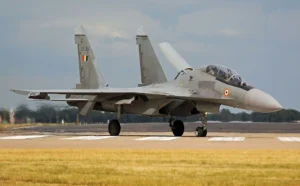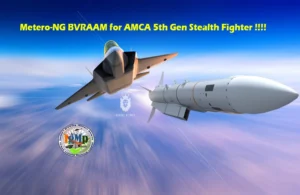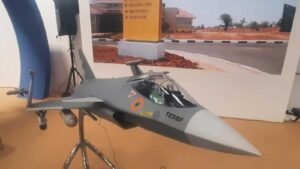Admiral R. Hari Kumar, Chief of Naval Staff (CNS), embarked on a comprehensive operational and administrative review, commencing with an assessment of the operational capabilities of the MiG-29K squadron in Goa on August 25. The visit, which included briefings and inspections of naval assets, showcased the Indian Navy’s commitment to its “Ships, Submarines & Aircraft First approach.”
One of the key highlights of this review was the inspection of the MiG-29K aircraft. These fighter jets belong to the renowned White Tiger Squadron (INAS 300) of the Indian Navy, which boasts a remarkable history spanning over 62 years. Admiral Kumar was briefed on the squadron’s operational prowess, highlighting their seamless integration with India’s largest ship, the Vikramaditya.
The video footage from the review showcases various aspects of the MiG-29K squadron. Notably, the operational briefing room features a poster depicting the MiG-29 and the Vikramaditya, symbolizing their integration. The review also encompassed a visit to the hangar, where an inspection of the aircraft’s armaments took place. The MiG-29K is armed with a 30mm Gryazev/Shipunov GSh-301 single-barrel gun, with 150 AO-18 rounds. While the video focuses on the aircraft’s cannon, it’s worth noting that the MiG-29K is equipped with advanced avionics, cruise missiles, beyond-visual-range (BVR) missiles, close combat missiles, and other components embedded within its fuselage.
The MiG-29K holds the distinction of being the sole aircraft operational on both of India’s aircraft carriers. However, due to quality concerns, India aims to replace these aircraft with its new Twin Engine Deck Based Fighter program. In a bid to further enhance its capabilities, the Nation’s Defence Acquisition Council has also set its sights on procuring 26 Rafale Marine fighter jets.
The MiG-29K was inducted into the White Tiger Squadron in 2016, ushering in a new era for the squadron. With the induction of these advanced aircraft, the squadron transitioned from its earlier roles, marking a full cycle of transformation. This evolution, from commissioning ‘Tail Hooking SeaHawks’ to the ‘Vectored Thrust’ Sea Harrier era, and finally the induction of the MiG-29K, represents the squadron’s resilience and adaptability.
Admiral Kumar’s comprehensive review underscores the Indian Navy’s commitment to staying at the forefront of technological advancements and enhancing its combat capabilities. The naval assets, especially the MiG-29K squadron, are a testament to India’s drive to bolster its defense capabilities and maintain its strategic edge in the region.
AFI
Source link
#Indian #Navy #Chief #Reviews #MiG29K #Squadron #Naval #Assets






